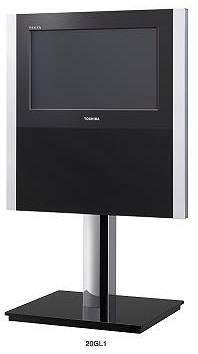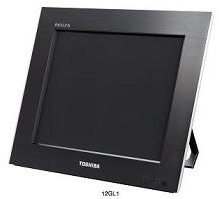|
|
Monday, October 4, 2010
|
Toshiba's To Introduce Glasses-free 3D TV In December
|
|
You are sending an email that contains the article
and a private message for your recipient(s). |
| Your Name: |
|
| Your e-mail: |
* Required! |
| Recipient (e-mail): |
* |
| Subject: |
* |
| Introductory Message: |
|
HTML/Text
(Photo: Yes/No) |
(At the moment, only Text is allowed...)
|
| |
|
| Message Text: |
Toshiba today unveiled the world's first LCD TVs that offer comprehensive 3D capabilities without any need for dedicated glasses.
The new "Glasses-less 3D REGZA GL1" series offers two models with screen sizes specifically designed for personal use: the 20-inch 20GL1 and the 12-inch 12GL1. Both TVs will be available in Japan from the end of December.
The newly developed technological innovation for 3D-TVs without glasses uses an integral imaging system. It provides nine different perspectives (parallaxes) of each single 2D frame which the viewer?s brain superimposes to create a 3-dimensional impression of the image. Toshiba's engineers developed a powerful engine and an algorithm to extrapolate these perspectives out of the 2D frame and used a perpendicular lenticular sheet, an array of lenses, that enable the viewer?s brain to superimpose the perspectives. It also offers a wide viewing area in front of the display and allows movement of the eyes and head without disrupting the 3D image and without the discomfort sometimes associated with other 'glasses-less' 3D technologies, according to the company.
 The 20GL1 integrates a high definition LED backlit LCD panel specially designed for 3D capability without any need for glasses that offers approximately four times the pixels of a standard Full HD panel. It also integrates the Cell REGZA Engine designed for 3D capability without glasses and based on the Cell Broadband Engine to deliver superior multimedia processing. The 20GL1 integrates a high definition LED backlit LCD panel specially designed for 3D capability without any need for glasses that offers approximately four times the pixels of a standard Full HD panel. It also integrates the Cell REGZA Engine designed for 3D capability without glasses and based on the Cell Broadband Engine to deliver superior multimedia processing.
The 20GL1's high definition LED backlit LCD panel, specially designed for 3D capability without glasses, has approximately four times the pixels of a Full HD panel, approximately 829 million pixels. It can combine and display nine parallax images carrying information from nine images created in real time from a single frame. It transmits the final 3D image with a resolution of 1280 x 720 pixels.
Toshiba's LED backlight control system positions 1,440 LEDs directly under the LCD panel to realize bright 3D images. Moreover, each pixel can support the display of red green and blue (RGB) in a layout expressly designed for 3D imaging. Image data from each pixel is replicated nine times and the direction in which they are transmitted is controlled by the lenticular sheet. The result is smooth, natural 3D images that can be viewed from multiple angles without glasses.
The 12GL1 supports the same approach for approximately 147 million pixels and integrates an LED panel that can display 466 x 350 pixels.
 The 20GL1 integrates the Cell Broadband Engine and the Glasses-less 3D CELL REGZA Engine, newly developed multi-parallax conversion LSIs designed for superior multimedia processing. High speed arithmetic processing creates nine parallax images from original content and converts it to 3D images with real depth, allowing Toshiba to achieve precise rendering of high quality 3D images. The 20GL1 integrates the Cell Broadband Engine and the Glasses-less 3D CELL REGZA Engine, newly developed multi-parallax conversion LSIs designed for superior multimedia processing. High speed arithmetic processing creates nine parallax images from original content and converts it to 3D images with real depth, allowing Toshiba to achieve precise rendering of high quality 3D images.
The system is similar to what's used in Nintendo's 3DS, the company's highly anticipated handheld device that features glasses-free 3-D gaming.
The small screen size 3D TVs without glasses are targeted at a small group of early adopters. With the new TVs, Toshiba wants to prove that auto-stereoscopic 3D displays are both technologically and commercially feasible. However, it will take several years to develop larger 3D TVs without glasses with screen sizes of 40" and more at a yet reasonable price point. Those who want to enjoy the 3D home cinema experience on a large screen already today are well served by 3D TV using active shutter glasses.
Suggested viewing distance for the 20-inch model is 90 centimeters (35.4 inches) and 65 centimeters (25.6 inches) for the 12-inch size.
The TVs will go on sale in Japan in late December, Toshiba said. They smaller version will cost about 120,000 yen ($1,400), and the larger one will be double the price.
|
|
|
|
|